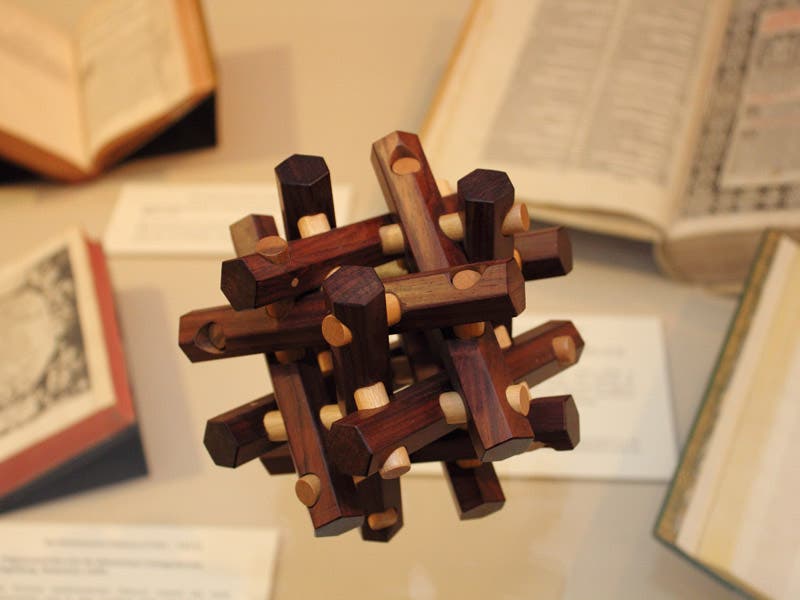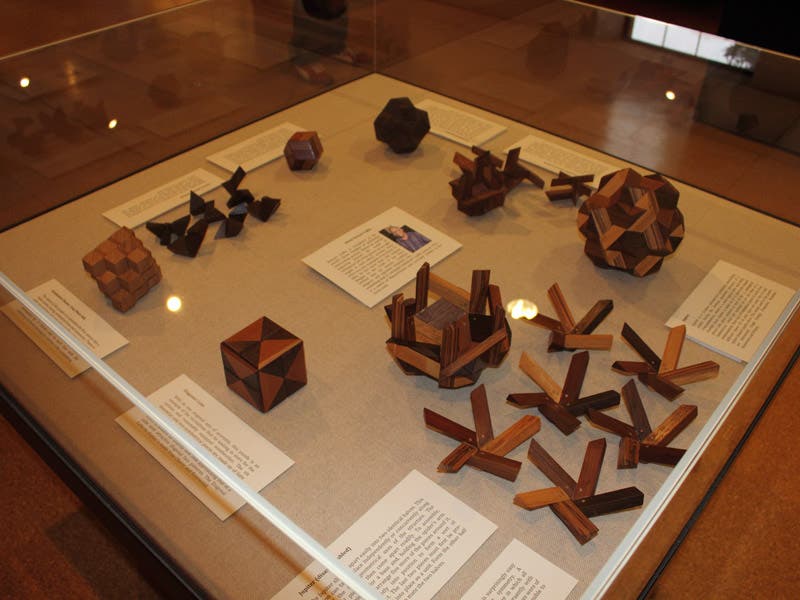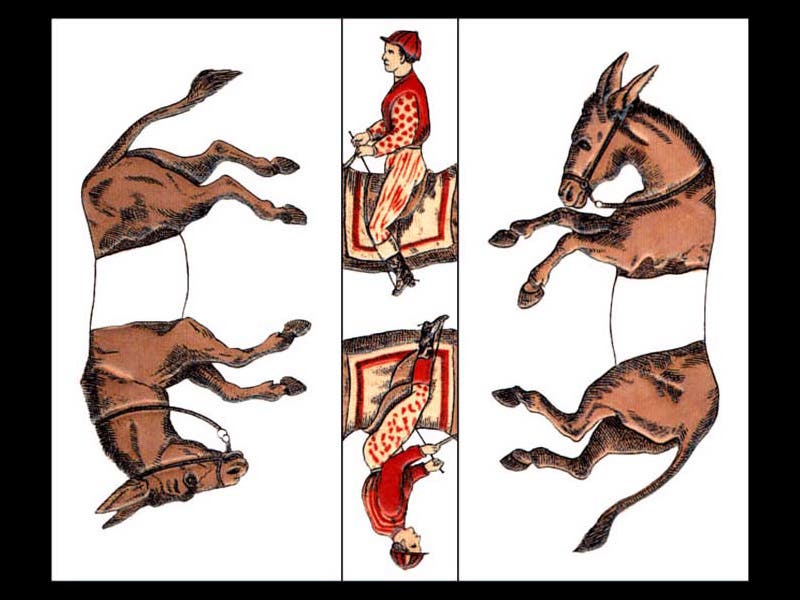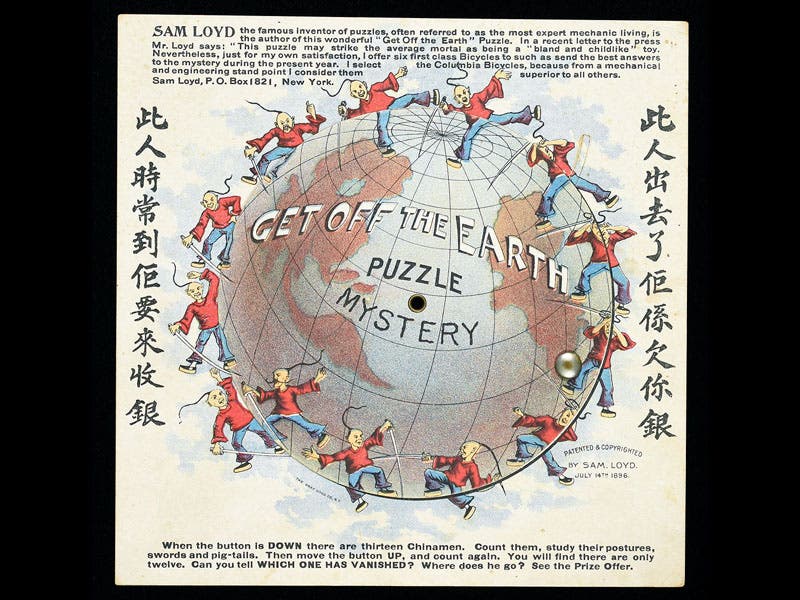Scientist of the Day - Sam Loyd


Sam Loyd, an American puzzle and mathematical games designer, was born Jan. 30 (or Jan. 31), 1841. Loyd was trained as a mechanical engineer, but he discovered early on that he had quite a knack for creating chess problems, of the variety "white to play and mate in three", except that Loyd's were more clever and far more fiendish, such as: "From a standard opening position, show how, if both players make the same moves, white can mate in four.” Loyd found that people would pay for his puzzles, and he never looked back. By 1870, he had moved on from chess problems to mathematical and mechanical puzzles. One of his most popular and successful puzzles came out in 1871 and was called "Trick Donkeys." You bought a little printed card that you cut into three strips, two with a donkey printed on them, and one with two jockeys (first image). The goal was to mount the two riders on the two donkeys without bending or cutting the strips. We reproduce the puzzle above, which you can print out and cut apart, if you like. If you haven’t seen this before, good luck! The puzzle sold literally hundreds of millions of copies over Loyd's lifetime. His other ingenious creation was called "Get off the Earth" (1896), a circular disk rotating on another larger circular disk, on the overlap of which are printed 13 Chinese warriors (second image). When you rotate the outer disk as instructed, one of the warriors disappears. Where does he go?
Loyd also claimed to have invented the "15 puzzle", or the “14-15 puzzle”, which was probably the most popular puzzle in the world in the 1880s. You have probably played with one, a shallow 4x4 square box with 15 tiles inside that slide around, each containing a number between 1 and 15, and with one square empty (third image). The goal is to manipulate the numbered tiles into a sequence from 1 to 15, with the empty square at bottom right. Loyd sold the puzzle with the tiles in order, except that 14 and 15 were interchanged. If that is the case, then the puzzle cannot be solved. If the tiles are inserted at random, then the puzzle can be solved half of the time. Many books on puzzle history call the “15 puzzle” Loyd's greatest invention, but we now know he didn't invent it at all--he merely claimed ownership 15 years after someone else invented it. There was more than a little of the unscrupulous huckster in Sam Loyd.
On Loyd's birthday in 2015, the Library opened an exhibition: Ingenious Objects: Geometric Puzzles by Stewart Coffiin. Coffin made intricate puzzles from exotic woods, usually in the form of interlocking polygons; the trick was to find the key that allowed them to be taken apart. The collection we exhibited was that of a retired professor of mathematics in Kansas City, Norton Starr. Here is one of Coffin’s handiworks, the Jupiter puzzle (fourth image). The Library’s display cases showed both assembled puzzles and duplicates that have been taken apart so the design and workmanship could be appreciated (fifth image).
Every year the Association of Game and Puzzle Collectors bestows the "Sam Loyd Award" to some deserving puzzle designer or collector. In 2000, Stewart Coffin received the Loyd Award. The prize consists of a “Get Off the Earth” puzzle mounted on a wooden base. Pictured is the award winner for 2006, Jerry Slocum, with his trophy (sixth image). Slocum co-authored a book on the 15 Puzzle in which he proved beyond dispute that Sam Loyd did not invent that puzzle. Wonderful!
Dr. William B. Ashworth, Jr., Consultant for the History of Science, Linda Hall Library and Associate Professor, Department of History, University of Missouri-Kansas City. Comments or corrections are welcome; please direct to ashworthw@umkc.edu.










